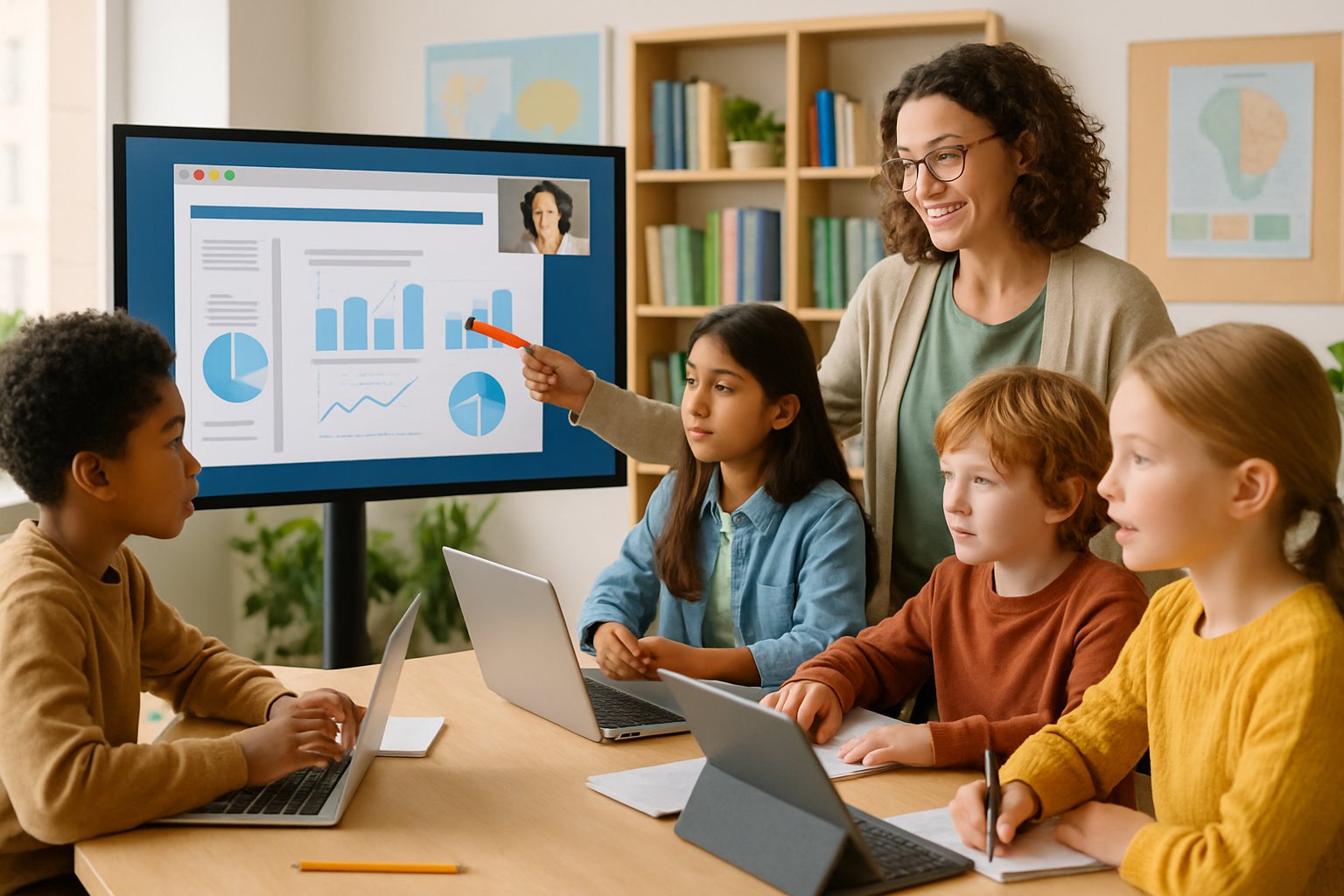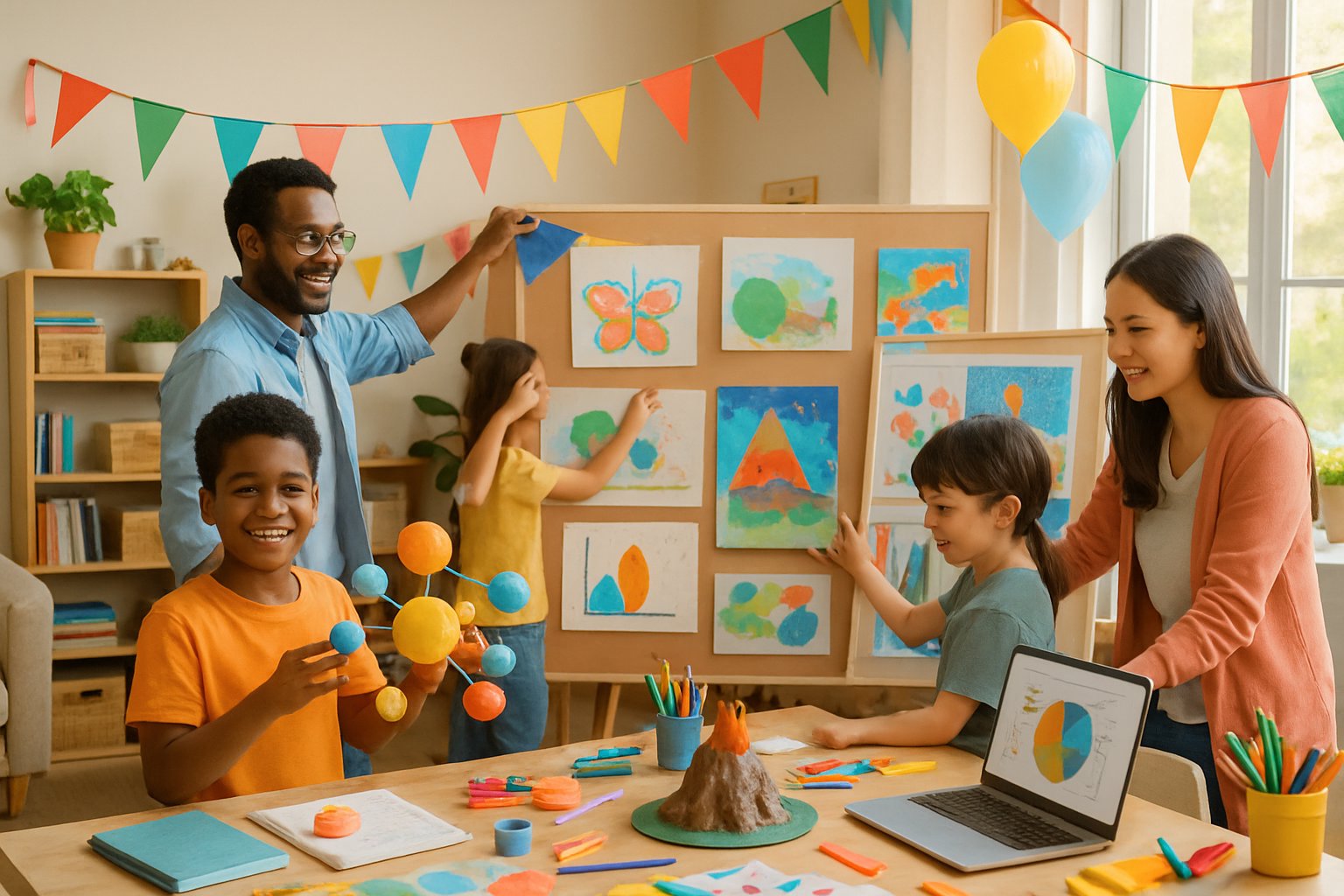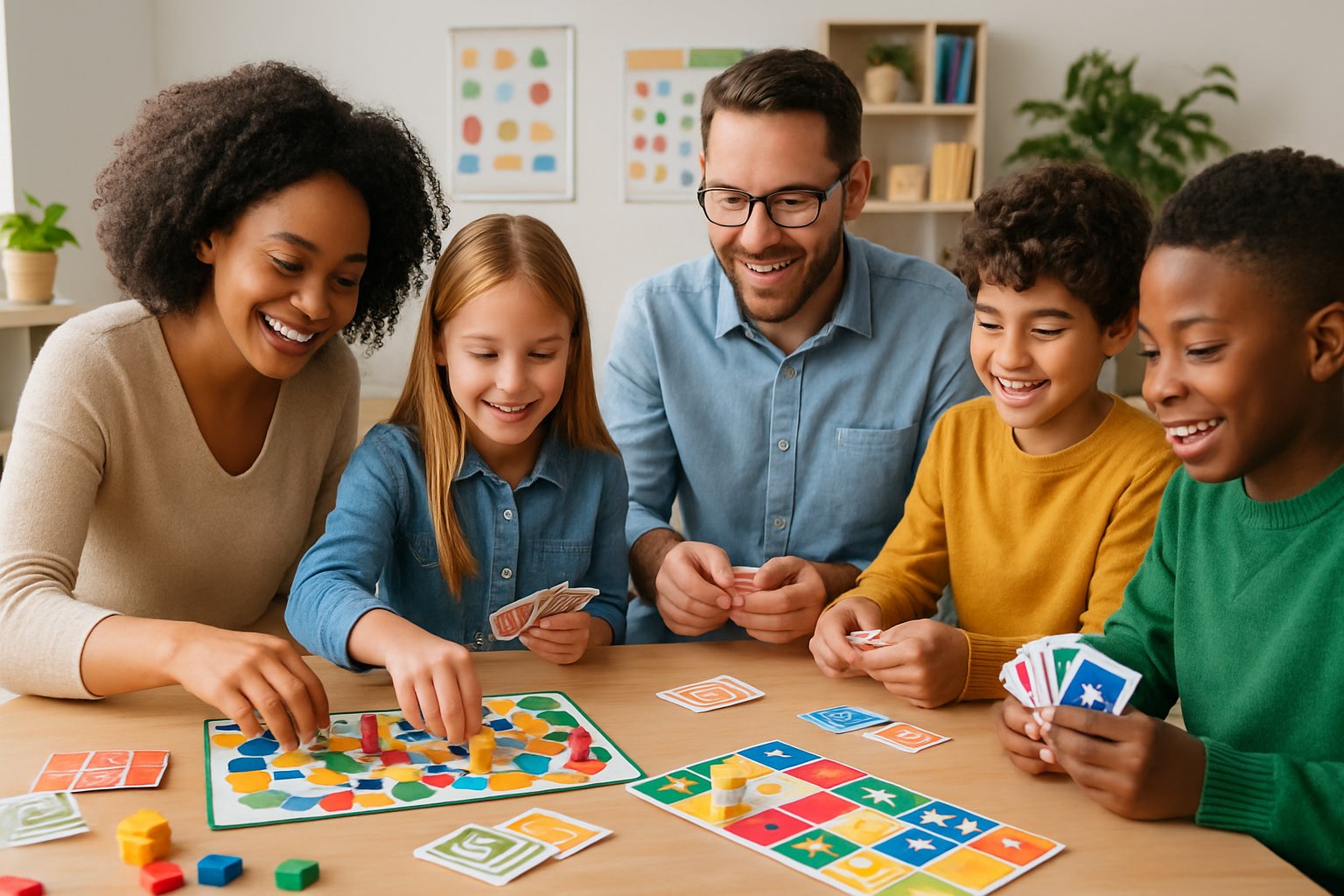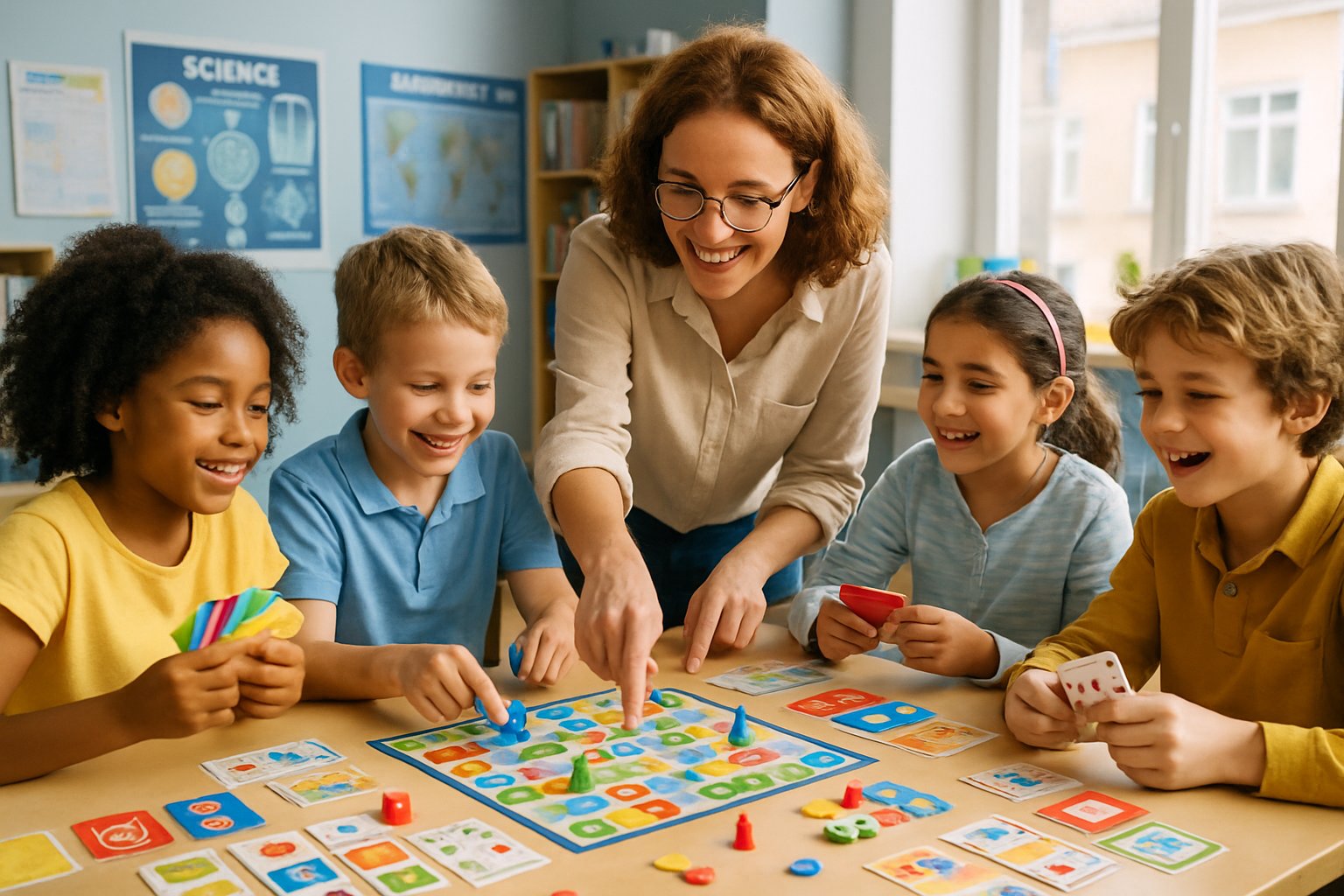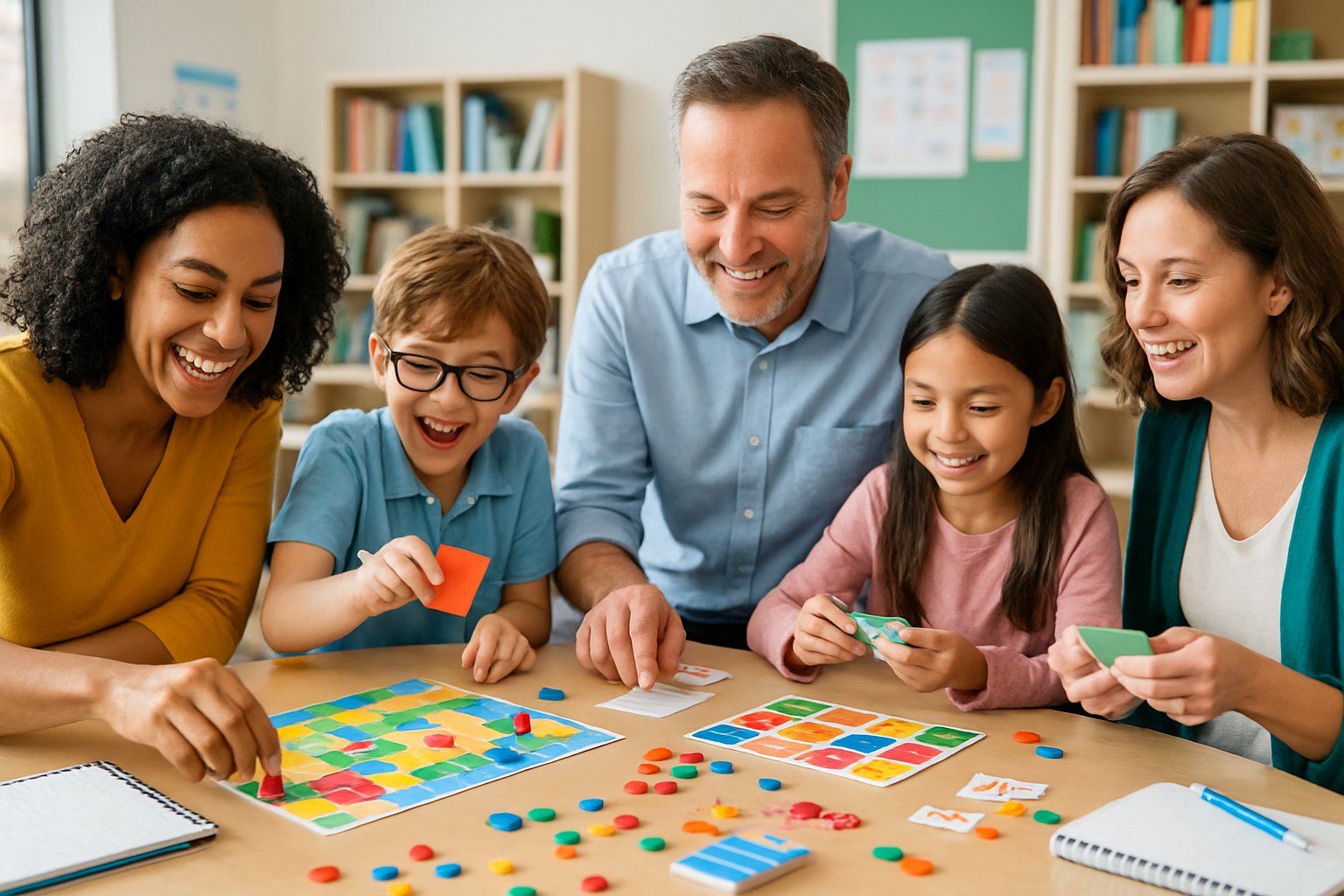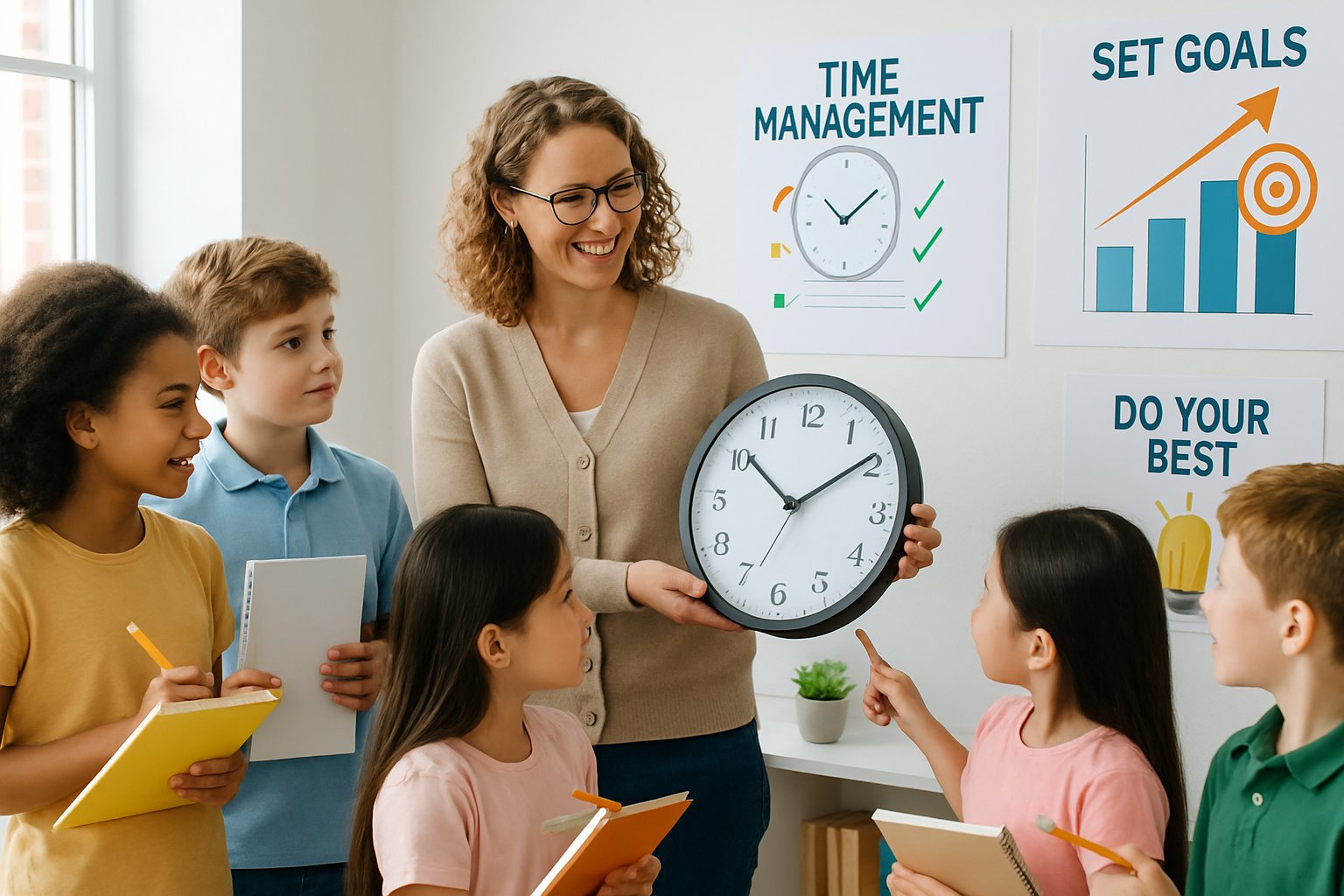The Science Behind Play-Based Learning
Play-based learning supports how children think, focus, and solve problems. Research shows that playful experiences shape brain development, strengthen focus, and encourage flexible thinking that children carry into later learning.
Cognitive Growth and Brain Development
Children’s brains grow rapidly in the early years, and play acts as a natural driver of that growth. When they explore through play, they form new neural connections that support memory, language, and reasoning.
Studies show that learning through play helps children build skills like curiosity and adaptability. These skills prepare them to keep learning as their brains mature.
Play also helps children connect abstract ideas to real experiences. For example, stacking blocks teaches balance and spatial awareness, while role-play supports language and social understanding.
In short, play strengthens both the structure and the function of the developing brain.
Executive Function and Attention
Executive function includes self-control, flexible thinking, and working memory. These skills help children manage tasks, follow directions, and stay focused. Play creates natural opportunities to practice them.
In guided play, children learn to wait their turn, follow simple rules, and adjust when something changes. Activities like board games or pretend scenarios encourage them to hold information in their minds while shifting attention as needed.
Research highlights that play-based learning in early education supports stronger attention spans than direct instruction alone. This is because children remain more engaged when they are active participants rather than passive listeners.
By practicing focus in playful ways, children build habits that support later academic success.
Critical Thinking and Problem-Solving Skills
Play also develops critical thinking and problem-solving skills. When children experiment, they test ideas, make mistakes, and try new approaches. This process builds resilience and flexible thinking.
For example, during pretend play, children negotiate roles and rules. In building activities, they solve structural challenges by trial and error. These experiences strengthen reasoning and decision-making.
According to Edutopia, play-based learning can be more effective than direct instruction for developing these skills in early learners.
Through playful problem-solving, children learn how to analyze situations, adapt strategies, and persist until they find solutions.
Social, Emotional, and Physical Benefits of Play
Play supports children’s growth by strengthening how they connect with others, manage their feelings, and build control over their bodies. It allows them to practice real-life skills in safe and enjoyable ways while also reinforcing learning goals.
Social Skills and Collaboration
When children play together, they learn how to share, take turns, and listen to one another. These small actions help them build strong social skills that carry into group learning and daily interactions.
Cooperative activities like building with blocks or role-playing games encourage collaboration. Children must negotiate roles, solve conflicts, and communicate ideas clearly. These moments strengthen both expressive language and listening skills.
Play also helps children understand group dynamics. For example, in guided play, they may work together to solve a puzzle. Each child contributes ideas, which fosters teamwork and respect for different viewpoints.
Research shows that play-based learning improves social development by promoting cooperation and problem-solving in early childhood classrooms. Activities that require joint effort create opportunities for children to practice leadership and compromise in authentic ways.
Emotional Regulation and Empathy
Through play, children explore emotions in a safe space. Pretend play, for example, lets them act out scenarios that involve joy, frustration, or disappointment. This practice supports emotional regulation by teaching them how to manage strong feelings.
Games with rules also help children develop self-control. Waiting for a turn or following agreed guidelines encourages patience and discipline. These skills are essential for both learning and relationships.
Playful interactions nurture empathy. When children role-play as caregivers, doctors, or friends, they begin to imagine how others feel. This builds emotional intelligence, which helps them connect with peers more meaningfully.
According to studies on social and emotional skill development, play-based learning gives children tools to recognize emotions in themselves and others. Over time, this ability supports conflict resolution and stronger friendships.
Physical Development and Motor Skills
Play also contributes to physical development. Running, climbing, and jumping build gross motor skills and overall coordination. These activities strengthen muscles, balance, and endurance.
Fine motor skills improve during activities like drawing, cutting, or building with small objects. These tasks enhance hand-eye coordination and prepare children for writing and other academic work.
Unstructured outdoor play is especially valuable. It allows children to explore movement freely, improving agility and confidence in their bodies.
Research from the American Academy of Pediatrics highlights that play supports both physical health and cognitive growth. By combining movement with exploration, children build strength while also engaging their thinking skills.
Physical play also supports self-control. For example, games like “Red Light, Green Light” require children to stop and start on cue, linking body movement with attention and discipline.
Types of Play in Homeschool Environments
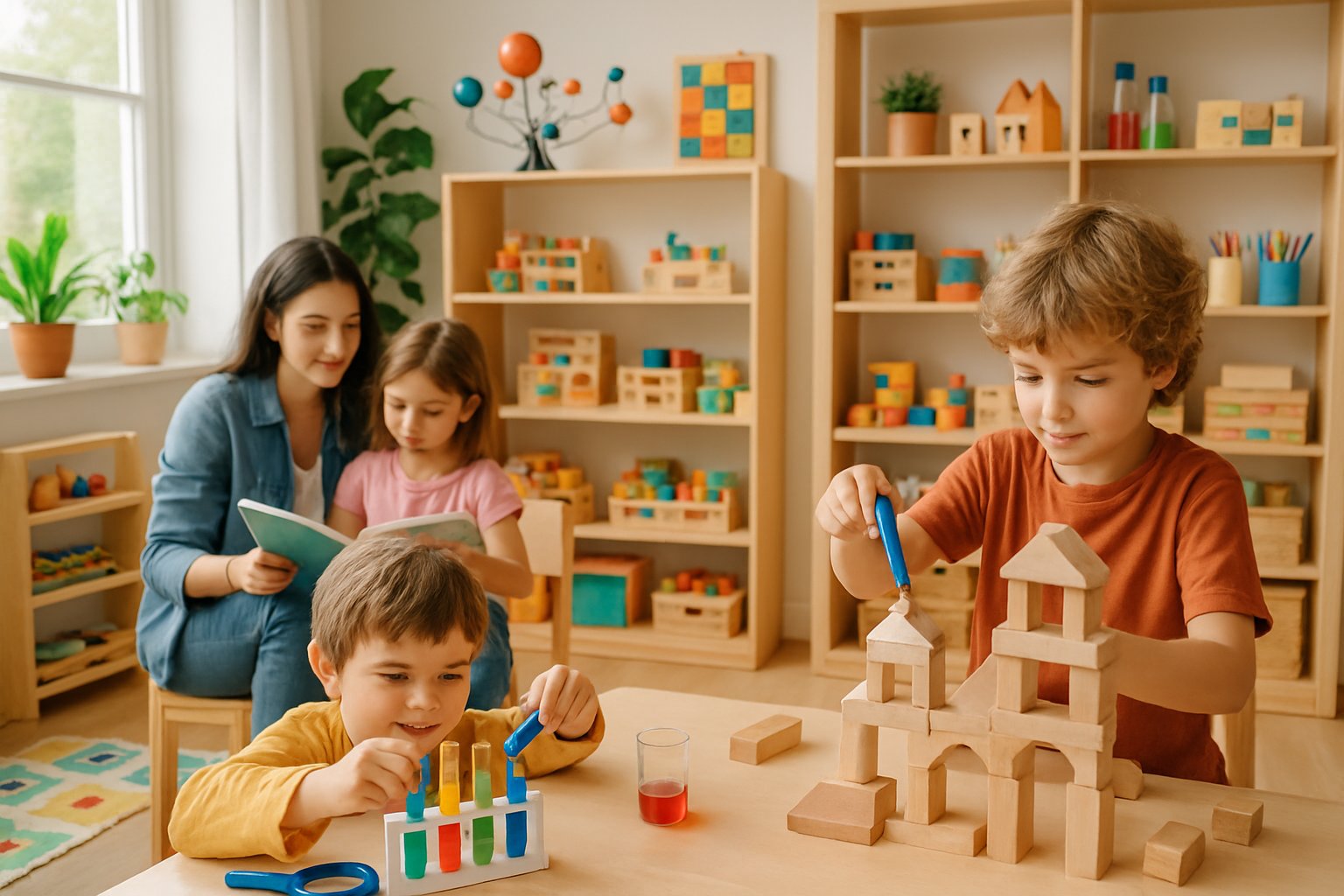
Children learn in different ways through play. Some play is open-ended and child-led, while other play is guided with clear goals. Both structured and unstructured approaches can support skills like problem-solving, creativity, and social development.
Unstructured Play and Free Play
Unstructured play, also called free play, allows children to choose their own activities without adult direction. This type of play encourages independence and creativity because kids decide how to use their time and materials.
Examples include building with blocks, drawing, or inventing new games. Children practice decision-making and problem-solving while exploring freely. Unlike scheduled lessons, free play gives them space to follow their interests without pressure.
Research shows that free play helps develop social-emotional skills. Kids learn to negotiate rules, share, and resolve conflicts. In a homeschool setting, parents can set up safe play areas with open-ended materials like art supplies, puzzles, and loose parts such as sticks or pebbles.
A balance of free play with other learning methods supports both curiosity and self-motivation. Families who value unstructured time often notice that children stay more engaged when it comes time for structured lessons.
Pretend Play and Imaginative Play
Pretend play and imaginative play let children explore roles, ideas, and stories. They may act out real-life situations like running a store or caring for a pet, or they may create fantasy worlds with superheroes or magical creatures.
This type of play strengthens language, storytelling, and role-playing skills. Children practice empathy by taking on different perspectives. For example, pretending to be a doctor helps them understand caregiving, while play-acting as a shopkeeper builds early math skills through counting and exchanging items.
Imaginative play also supports problem-solving. When children invent rules for a game, they learn flexibility and cooperation. Parents can encourage this by providing costumes, puppets, or simple props. Even cardboard boxes can become castles or spaceships.
Homeschool families often use pretend play to connect lessons with creativity. A history lesson might turn into a play-acting activity where children dress up and retell events through skits or storytelling.
Outdoor Play and Sensory Experiences
Outdoor play gives children physical activity and exposure to nature. Running, climbing, and exploring outdoor playgrounds build strength, coordination, and confidence. Groups like KaBOOM! and Playful City USA highlight how access to outdoor play spaces benefits communities.
Outdoor play also provides sensory experiences. Children feel textures like grass, sand, or water, and they hear natural sounds like birds or wind. These sensory inputs support brain development and help regulate emotions.
Simple activities like gardening, nature walks, or playing with mud give children hands-on learning. Parents can set up scavenger hunts, build obstacle courses, or let kids collect leaves and rocks.
Outdoor play also connects to science and observation. Watching insects or measuring rainfall turns exploration into informal lessons. In homeschooling, this flexible environment makes learning active and engaging without relying only on books or screens.
Guided Play and Play-Based Activities
Guided play combines free exploration with adult support. Unlike unstructured play, it includes gentle direction toward a learning goal. Research from the University of Cambridge shows that guided play can improve skills like math and problem-solving better than direct instruction alone.
In guided play, adults set up activities and provide prompts but do not control every step. For example, a parent may offer blocks and ask, “How tall can you build this tower?” The child explores, while the adult nudges thinking with open-ended questions.
Play-based activities can include board games, building challenges, or storytelling prompts. Role-playing games also fit here, as they combine imagination with structured goals. For instance, pretending to run a grocery store can teach math, reading, and cooperation.
Homeschool parents can rotate play centers with materials tied to current lessons. A science corner might include magnifying glasses and natural objects, while a math center could use dice or counting games. This balance of freedom and guidance keeps learning enjoyable and purposeful.
Integrating Play-Based Learning in Homeschooling
Families can support learning by shaping the home into a space that encourages curiosity, choosing tools that make learning active, setting healthy limits on technology, and exploring the world beyond the house through real-life experiences. These approaches help children connect lessons to everyday life in meaningful ways.
Creating a Play-Rich Home Environment
A home that supports play-based learning gives children space to explore, build, and imagine. Parents can set up play zones with blocks, art supplies, puzzles, or pretend play items. These areas do not need to be large, but they should be organized and easy for kids to access on their own.
Allowing children to choose from open-ended materials encourages creativity. Items like building sets, dress-up clothes, or natural materials such as rocks and sticks can be used in many ways. This type of setup helps children practice problem-solving and social skills while they play at home.
Homeschoolers benefit when the environment changes over time. Rotating toys or rearranging spaces keeps activities fresh and prevents boredom. Even small adjustments, like adding a new basket of books or a sensory bin, can spark curiosity and extend play.
Choosing Educational Toys and Learning Resources
Educational toys and learning resources guide children toward specific skills while still keeping play fun. Parents can look for toys that build math, reading, or science skills without feeling like traditional lessons. For example, counting bears, letter tiles, or simple science kits can all be used as part of daily play.
Games that involve strategy, such as checkers or card games, also strengthen critical thinking. According to research on play-based learning in early childhood, guided play can improve problem-solving and task-switching skills more effectively than direct instruction.
It helps to choose resources that grow with the child. A set of magnetic tiles, for instance, can be used by preschoolers for simple shapes and by older children for complex structures. This flexibility makes toys more valuable for homeschool families who want long-term use.
Balancing Screen Time and Play
Technology can support homeschooling, but too much screen time can reduce opportunities for active play. Families should set clear boundaries to make sure screens do not replace hands-on learning. For example, they might limit device use to certain hours of the day.
Screens can still be useful when chosen carefully. Educational apps, virtual museum tours, or online science experiments can enrich lessons. Parents can connect digital activities with offline play, such as watching a video about animals and then creating habitats with toy figures.
Experts recommend mixing digital and physical learning techniques. A balanced plan allows children to enjoy the benefits of technology while still gaining the social and physical growth that comes from unstructured play.
Field Trips and Hands-On Learning
Field trips give homeschoolers a chance to connect lessons with real-world experiences. Visits to farms, science centers, or local museums encourage children to ask questions and apply what they have learned at home. These outings also provide social interaction with peers and adults.
Hands-on learning extends beyond formal trips. Nature walks, cooking, or gardening are everyday activities that build science, math, and life skills. For example, measuring ingredients in a recipe reinforces math concepts, while planting seeds shows children how living things grow.
Families can plan a mix of structured and unstructured experiences. Some trips may include guided tours, while others allow children to freely explore. This balance mirrors the idea of guided play, where children lead their own learning but still benefit from gentle direction.
Inclusivity and Equity in Play-Based Homeschooling
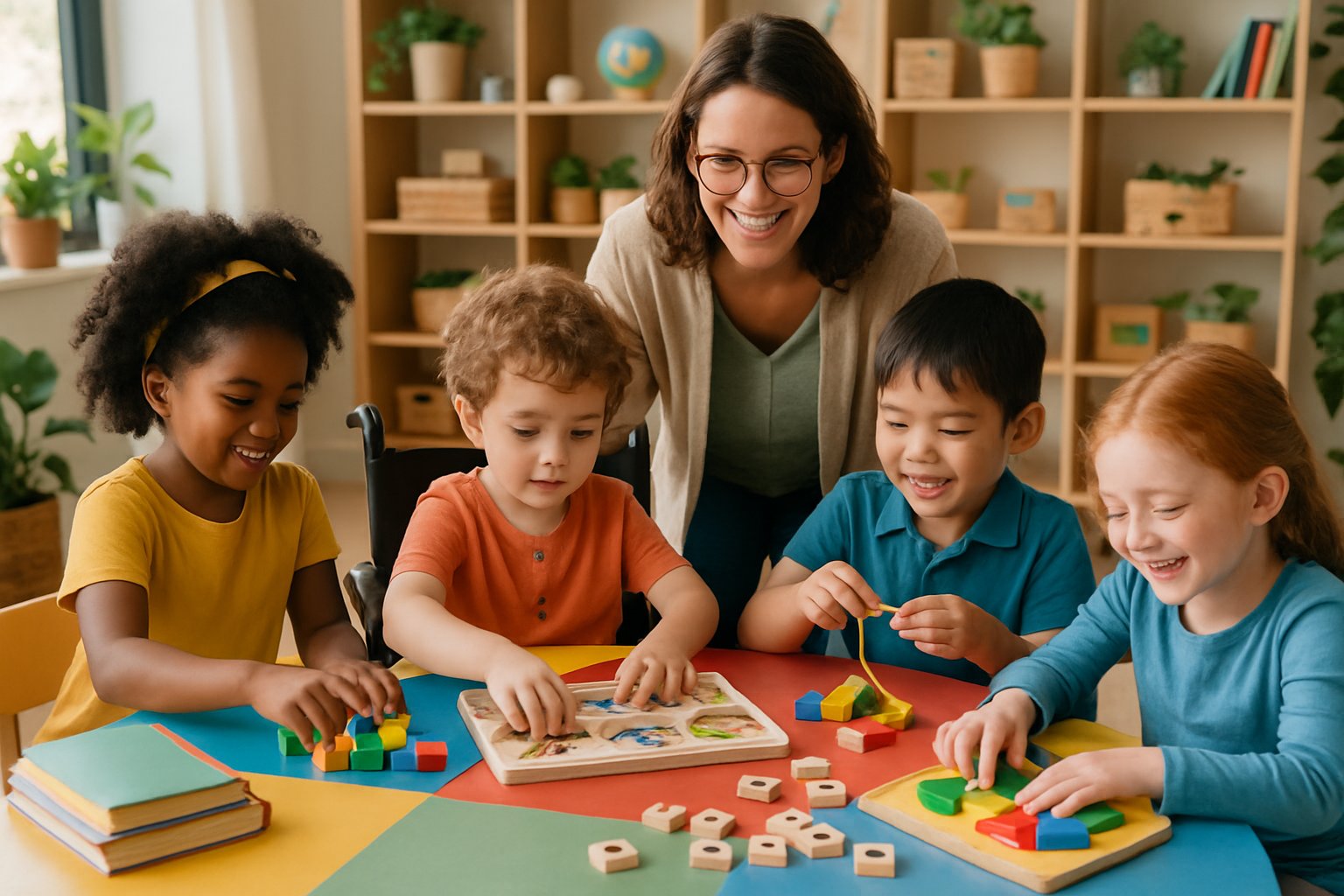
Families who use play-based homeschooling often look for ways to make learning spaces fair, accessible, and supportive for all children. Creating equal chances to play, designing spaces that meet different needs, and addressing behavioral and emotional differences help children feel included and ready to learn.
Equal Play Space Opportunities
Children learn best when they all have a fair chance to join in play. In homeschooling, this means setting up play areas where no child feels left out. For example, rotating toys or creating shared activity zones can prevent one child from controlling all the resources.
Parents can also use structured turn-taking or small group play to make sure everyone participates. This approach mirrors practices seen in inclusive play-based learning classrooms, where teachers balance child choice with gentle guidance.
A simple table can help families plan equal opportunities:
| Activity | How to Ensure Fair Access |
|---|---|
| Building blocks | Rotate sets among children |
| Outdoor play | Assign time slots if space is limited |
| Pretend play | Provide multiple roles for children |
These small steps help children share, cooperate, and feel included in everyday learning.
Play Space Equity and Accessibility
Equity in play spaces means more than equal time. It also means making sure every child can access the space and materials regardless of ability. For example, children with mobility challenges may need low shelves, wide play areas, or adaptive seating.
Families can design flexible play zones with both quiet corners and active areas. This helps children who need calm settings as well as those who thrive in movement-based play. Research on inclusive play-based learning shows that adapting the environment can reduce barriers and increase social interaction.
Parents may also consider visual supports like picture labels or color-coded bins. These small adjustments create an environment where children of different abilities can play side by side.
Supporting Diverse Behavioral and Emotional Needs
Children bring different behavioral and emotional needs into play. Some may need help with self-regulation, while others may struggle with frustration or social cues. In homeschooling, parents can use play-based interventions that teach coping skills in natural ways.
For example, role-play games can help children practice sharing or calming strategies. Cooperative board games can support patience, turn-taking, and teamwork. These activities encourage holistic development by blending emotional growth with early education goals.
Parents can also set up predictable routines to reduce stress. When children know what to expect, they feel safer and more willing to engage. This mirrors strategies used in formal education settings where structure supports inclusion and reduces conflict.
By responding to each child’s needs through play, families create a supportive environment that values every learner.


